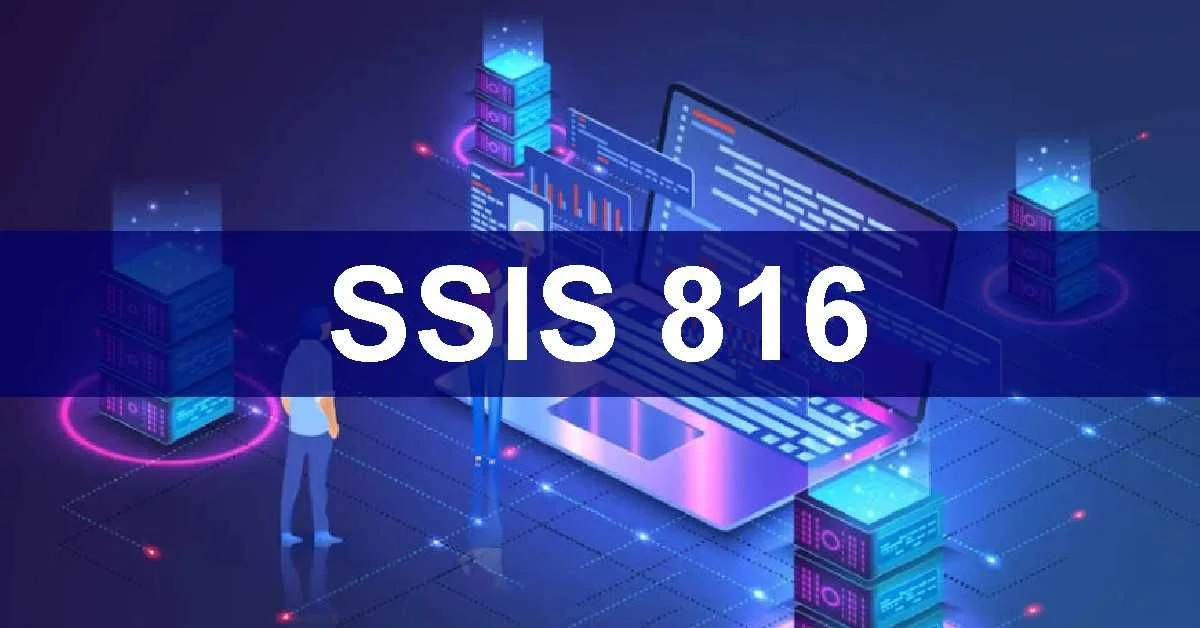In today’s data-driven world, managing massive datasets efficiently is essential for businesses of all sizes. SQL Server Integration Services (SSIS) has long been a cornerstone tool for handling data extraction, transformation, and loading (ETL). With the introduction of SSIS 816, Microsoft has taken its integration capabilities to the next level, offering faster performance, better error management, and enhanced cloud compatibility.
What Is SSIS 816?
SSIS 816 is the most recent version of Microsoft SQL Server Integration Services. It is designed to streamline the processes of data movement, cleaning, and structuring. Whether you are dealing with local databases or cloud-based storage, SSIS 816 offers seamless, high-performance integration capabilities.
Key advantages of SSIS 816 include:
- Faster data transfer and transformation.
- Easy integration with cloud services like Azure.
- Enhanced tracking of errors in data flows.
- Simplified user interface for developers.
Why SSIS 816 Is a Game-Changer
Lightning-Fast Data Processing
Speed is one of the hallmark features of SSIS 816. It has been engineered to handle enormous amounts of data with enhanced efficiency.
Highlights:
- Parallel processing: SSIS 816 allows multiple data tasks to run simultaneously, increasing throughput.
- Optimized memory usage: Better resource management enables your systems to perform smoothly during large data operations.
Example Use Case: Suppose you’re migrating massive retail sales data from an on-premise system to the cloud. SSIS 816 will significantl
y reduce the transfer time, minimizing business disruption.
Advanced Error Management and Troubleshooting
When handling large datasets, errors are inevitable. What makes SSIS 816 exceptional is how it helps users identify, track, and resolve these issues quickly.
Features:
- Visual error mapping: Errors are pinpointed with graphical indicators in the data flow process.
- Custom alerts: You can configure real-time notifications for issues in data transfers or transformations.
This refined error handling drastically reduces debugging time and ensures smoother ETL processes.
Seamless Cloud Integration Capabilities
Cloud integration is no longer optional—it’s essential. SSIS 816 is fully equipped to work with a variety of cloud environments and databases.
Supported platforms include:
- Microsoft Azure: Direct integration with Azure Data Lake, Azure SQL Database, and Azure Synapse Analytics.
- NoSQL Databases: Supports popular solutions like MongoDB and Cassandra.
Whether your data resides in a hybrid environment or is fully cloud-native, SSIS 816 provides stable and secure connectivity.
Simplified and User-Friendly Interface
One of the criticisms of older SSIS versions was the complexity of the development interface. SSIS 816 introduces a more intuitive, streamlined interface that helps developers work more efficiently.
Improvements include:
- Drag-and-drop functionality.
- Enhanced debugging tools.
- Simplified configuration settings for pipelines and transformations.
These usability enhancements empower both beginners and seasoned developers to build robust data workflows faster.
Backward Compatibility and Migration Support
Switching to a new version of integration services can be intimidating. Microsoft has made the migration process to SSIS 816 smooth and painless.
SSIS 816 offers:
- Backward compatibility with packages built in previous versions.
- Migration tools to automatically convert older packages to the new format.
- Extensive documentation and community support.
This ensures that companies can adopt SSIS 816 without disrupting ongoing operations.
The Future of SSIS: What’s Next?
While SSIS 816 already offers a significant leap forward, Microsoft continues to innovate. Here’s what the future might hold:
1. Deeper AI Integration
Expect future SSIS versions to include machine learning and artificial intelligence (AI) components that help with data pattern recognition, anomaly detection, and predictive analytics.
2. Greater Cloud-Native Focus
As more organizations transition fully to cloud ecosystems, SSIS is expected to enhance its capabilities in managing and automating cloud-based data workflows.
3. Real-Time Data Processing
More features are expected to handle real-time streaming data, essential for sectors like finance, e-
SSIS 816 stands out as one of the most capable and forward-looking versions of Microsoft’s ETL platform.
Key Takeaways
- SSIS 816 accelerates data transfers with parallel processing and optimized memory usage.
- It includes advanced error detection and real-time alerts.
- Offers native integration with cloud platforms such as Azure and MongoDB.
- Features a user-friendly interface for simplified development.
- Fully supports backward compatibility and migration from older SSIS versions.
Conclusion
If you’re managing large volumes of data, working across hybrid environments, or looking for better ETL performance, SSIS 816 is a worthwhile upgrade. It improves speed, reliability, usability, and cloud integration all critical features for modern data operations.

